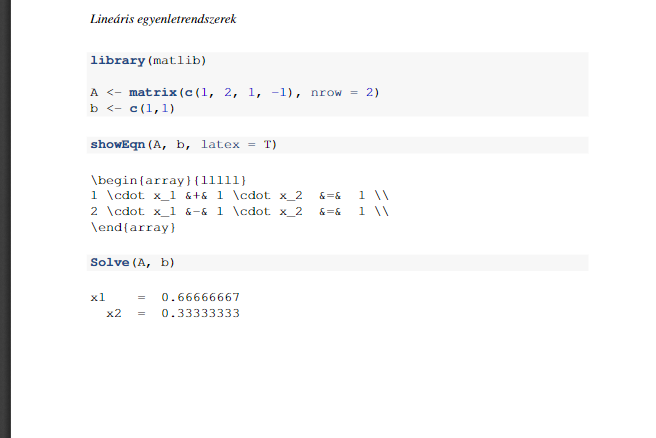
It accepts and runs a wide range of languages.
#Latex rmarkdown code#
You don’t have to embed R code in R Markdown. Awesome! More instructions here.īeautiful, clean xaringan slide layout (Image by author) 3. However, if you knit with parameters by selecting this option in RStudio’s Knit dropdown (or by using knit_with_parameters()), a lovely menu option appears for you to select your parameters before you knit the document. If you knit your document as normal, it will knit with the default values of these parameters as per the value variable. Now you can write these variables into the R code in your document as params$animal_name and params$years_of_study. For example: - title: "Animal Analysis" author: "Keith McNulty" date: "18 December 2020" output: html_document: code_folding: "hide" params: animal_name: value: Dog choices: - Dog - Cat - Rabbit years_of_study: input: slider min: 2000 max: 2019 step: 1 round: 1 sep: '' value:. You can do this by defining parameters in the YAML header of your R Markdown document, and giving each parameter a value.

You can automate a similar report about cats in just one command if you parameterize your R markdown document. And then you get told - ‘nah, I’m more interested in cats’. So you write a lovely R Markdown document where you’ve analyzed a whole bunch of facts about dogs. If you have worked in it before, here are ten little tricks I’ve learned which have served me well in numerous projects, and which highlight how flexible it is. If you have never worked in R Markdown, I highly recommend it. It is incredibly flexible, has many beautiful design options and supports many output formats really nicely. Though I code in both R and Python, R Markdown is my only route for writing reports, blogs or books.

It was initially developed as a 3 hour workshop, but is now developed into a resource that will grow and change over time as a living book.R Markdown is more versatile than you might think This is a book on rmarkdown, aimed for scientists.
#Latex rmarkdown pdf#
#Latex rmarkdown how to#

7.4.1 A note on workflow with rmarkdown: HTML first, PDF/word later.7.4 How do I convert to HTML, PDF, or Word?.6.8 Nick’s rmarkdown hygiene recommendations.6.4 The anatomy of an rmarkdown document.5.12.1 Aside: Creating an RStudio project.5.9 Your Turn: Use your own rstudio project.5.5 When you start a new project: Open a new RStudio project.4.4 What is RStudio, and why should I use it?.2.9 R Markdown helps complete the solution to the reproducibility problem.2.7 Markdown as a new player to legibility.



 0 kommentar(er)
0 kommentar(er)
